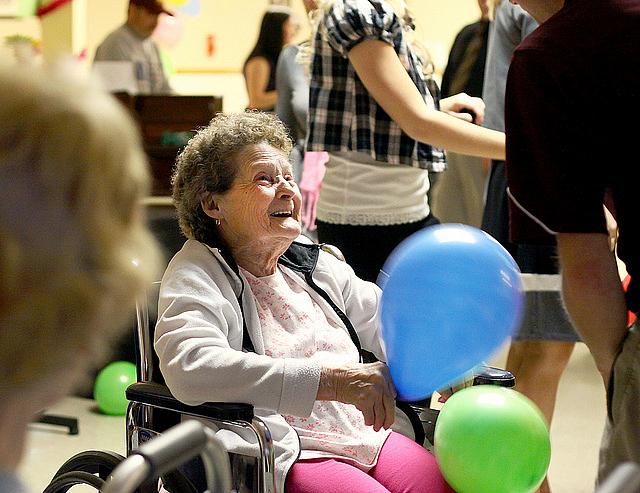Scrubs and Sandwiches: Researchers pinpoint best reasons to gown up against MRSA

One of the big missing pieces in the fight against health care-associated infections are strong, clear guidelines on when protective gear is warranted.
The Centers for Disease Control and Prevention offers a set of Isolation Guidelines, but these are too fuzzy to help in many situations. They essentially throw the decision back to the facility, telling health care providers that they should wear gowns, gloves and other “contact precautions” depending on the mix of patients in their facility. The guidelines say, “Individual facilities should seek appropriate guidance and adopt effective measures that fit their circumstances and needs.”
Imagine the dilemma faced by a small nursing home trying to do the right thing and finding out that the only guidance is no guidance.
Enter Dr. Mary-Claire Roghmann from the Department of Epidemiology and Public Health at the University of Maryland School of Medicine and her colleagues there and at the University of Michigan Medical School.
Roghmann examined the transmission of MRSA between nursing home residents and health care workers in 13 facilities and then made recommendations based on what she and her colleagues found. Here are three key takeaways from her study, published in Infection Control and Hospital Epidemiology.
1. Everyday activities in nursing homes can pose huge health risks. Roghmann and colleagues found that there were activities that posed no risk and some that had a risk potential as great as 37 percent. The highest risk activities were: dressing the resident, transferring the resident from one area to another, providing hygiene that included brushing teeth and combing hair, changing linens, and changing adult diapers. So what was low risk? You might be surprised to learn that giving medications to the residents was low risk, along with performing glucose monitoring.
2. The resident’s condition directly ties to the risk for MRSA transmission. The researchers went into the study assuming that the biggest risks would be in situations where patients had open wounds or dripping noses. They actually found those conditions to be quite rare. So they looked at other factors, such as incontinence and skin breakdown. Interestingly, they found that residents who were incontinent did not pose a greater risk of MRSA transmission, but skin breakdown did increase the risk when they were being transferred, having their diapers changed, or being dressed.
3. Gloves and gowns should be worn during the newly defined high-risk activities. The researchers said that when health care workers are performing high-risk activities as defined in point one above, and especially when working with patients with higher risk conditions defined in point two, they should put on gowns and gloves. They note that “under standard precautions, gowns and gloves are not recommended to be worn for what we define here as high-risk care.”
“The goal of our research was to determine the most important times to wear gowns and gloves in nursing homes by measuring the risk of MRSA contamination during different types of care,” Roghmann said in a prepared statement. “Our study, for the first time, defines the type of care that increases the risk of transmission and suggests modifications to the current indications of gown and glove use.”
It will be interesting to see how researchers use this work as a new baseline for assessing MRSA transmission risks in other areas, including the topic that Antidote readers will know well: health care workers wearing scrubs outside the health care setting.
Related post
Scrubs and Sandwiches: One mom’s innovative germ-fighting idea
Photo by Jeffrey Smith via Flickr.

